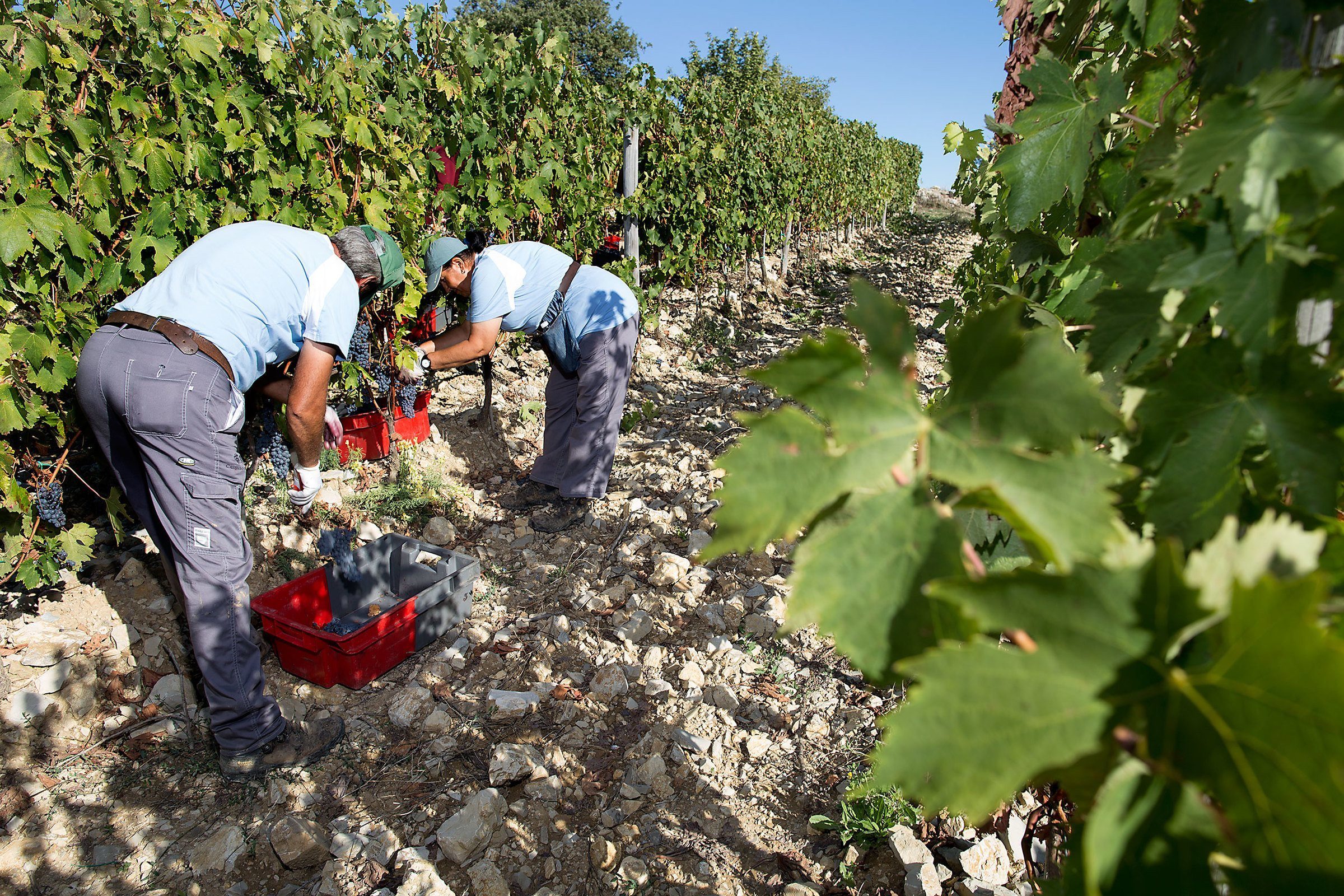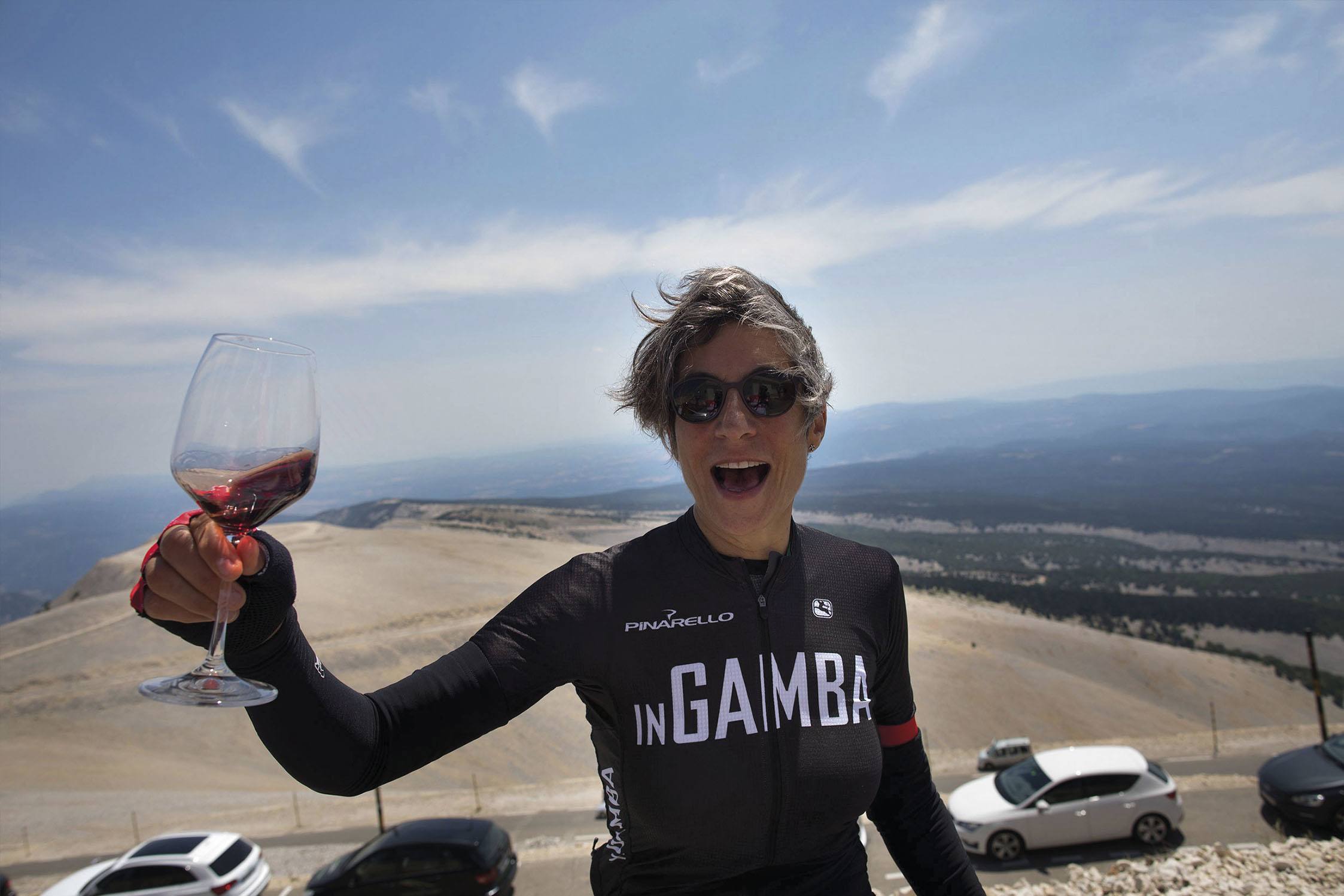To lovers of fine wine, or anyone who’s been to inGamba’s casa dolce casa in Tuscany, Castello di Ama will be a familiar name. Nestled in the hills of Chianti not far from our base in Lecchi, the winery was founded in the 1970s by a group of families from Rome who, having fallen in love with the landscape and the crumbling stonework of the eponymous little hamlet, set about restoring a once property to its former glory, while at the same time transforming the way the world thought about the unloved local tipple.
Well-versed art connoisseurs might recognise it too, because over the years, Ama’s owner, Lorenza Sebasti, and her family have curated a fascinating and diverse collection that includes works by the likes of Louise Bourgeois, Daniel Buren, and Anish Kapoor. They’re the kind of names you might expect to see them side by side at New York’s MoMA or London’s Tate Modern, but it’s not every day you find them dotted around a medieval village in Italy, surrounded by vines and olive trees. Even to the uninitiated, it makes an immediate impression, and gives the winery an unmistakable air of creativity and boldness that is entirely appropriate to both its wines and the effect they’ve had on Italian oenology.

Thanks in no small part to the influence of Castello di Ama, these days the best expressions of Chianti Classico compete with the great red wines of the world, having undergone a rapid metamorphosis from the much maligned stuff of bad Italian restaurants and straw-covered, bulbous bottles to one of the most sought-after wines on the global market.
Sebasti and Ama’s winemaker, Marco Pallanti, a Tuscan who studied in Italy and in France and who was once named Winemaker of the Year by Italy’s prestigious Gambero Rosso food magazine, have been at the heart of that transformation, and Castello di Ama now ranks among the country’s most highly regarded vineyards. The aforementioned Gambero Rosso named it Best Winery of the Year in 2005, and Ama was sixth on Wine Spectator’s Best Wines of the World in 2010.
“For me, it was in Chianti that a real sense of place, or terroir, was truly realised and understood for the first time,” says Colly Murray, an old friend of inGamba who operates RetroVino, a specialist wine importer based in Dublin, Ireland.
“The origins of my business were born out of a trip to Tuscany, and now, every time I taste a wine from Castello di Ama I’m transported back there to that first taste of their Sangiovese-Merlot blended Chianti Classico. In my opinion, this is the benchmark that wines from the region should live up to.”
The winery’s San Lorenzo is one of Ama’s three Gran Selezione wines, a bold new category of Chianti Classico that aims to promote and celebrate the very best of area’s potential. And while it might just be a coincidence, it’s worth noting that San Lorenzo, aka Saint Lawrence of Rome, was the patron saint of cooks and comedians – both fine companions for any bottle of wine.

The Gran Selezione label represent a step up in terms of quality for Chianti, and in turn are a guarantee for the consumer, in terms of origin and of quality, because it can only be produced using grapes grown by the winery itself. The vendemmia is completed entirely by hand, with small crates and a close sorting bench inspection ensuring only the best fruit is used.
San Lorenzo comes from a single vineyard in a bucolic valley and is made from a mixture of older vines, planted in the 70s, with some newer plantings made in the mid-90s. As always with Chianti, the majority of the grapes are Sangiovese, with some Malvasia Nera and Merlot added to create what they describe as an “extraordinarily elegant, powerful and intense wine – perfectly representing the uniqueness of the territory.” And perhaps fittingly for a group of thirsty cyclists, Wine Spectator described as a “racy, vibrant red.”
Ama’s Gran Selezione wines are only made in good years, so whatever vintage you find will undoubtedly be special, but Sebasti seems certain that the 2013 harvest was a particularly good one, completed in the final days of September and the first week of October that year, producing a wine that promises a dark ruby red color with crimson hues, a nose that combines berries and plum with hints of spice and tobacco, and a deep, full flavor that balances the wine’s smooth tannins perfectly with hints of ripened fruit.
“I love the 2013 Castello di Ama San Lorenzo so much,” says Lorenza, with the unabashed and justifiable pride of someone who has seen a lifetime’s dedication bear special fruit.
“I love it because it has elegance and a wonderful nose with a perfect structure, like a steel fist in a velvet glove!
“Or to put it another way, a wine like this gives pleasure from its youth, but also develops and enriches itself with time, like a beautiful woman, whose personality and charm become more developed and accentuated every year.”

We couldn’t have put it better ourselves. Most articles on wine tend to finish with comments on whether to drink or hold, but we’ve never been very good at keeping wine for special occasions, because in our opinion, it’s always a special occasion if you add a nice bottle or two of vino. Our advice? Get your hands on some soon before we finish it all ourselves.
–















